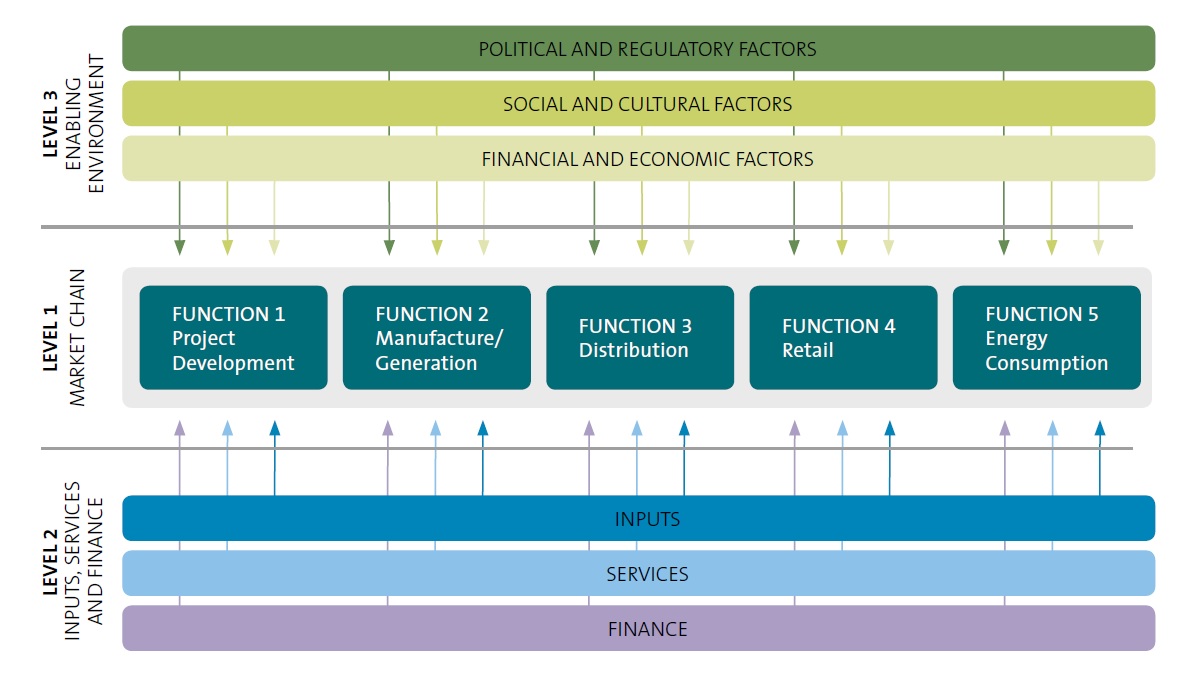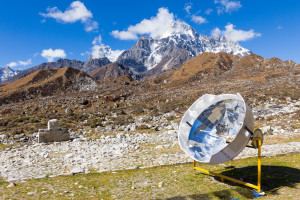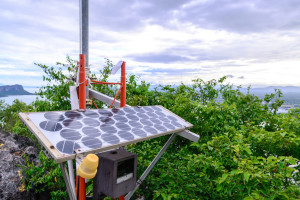A Road Map for Introducing Clean Energy in Developing Nations

Developing nations encounter multifaceted challenges when they seek to create clean-energy infrastructure. Responding to a need for a road map to help developers and decision makers solve these problems, EU Energy Initiative Partnership Dialogue Facility (EUEI PDF) and Practical Action have published a report called “Building Energy Access Markets: A Value Chain Analysis of Key Energy Market Systems.”
In some ways, a working energy market is like a house of cards; removing one piece of the functioning system can cause the entire structure to fail. In developing nations that lack energy-access infrastructure, there are often multiple pieces missing.
This report provides a pragmatic outline stakeholders can use to map out what these missing links are and address them one by one. Development professionals can use the framework in this report to identify solutions on a nation-by-nation basis.
Once a framework has been created for each nation, stakeholders can work together to improve energy investment and access by using a targeted problem-solving approach.
In a webinar on July 30 that featured this report and its case studies, Michael Franz, project manager at EUEI PDF, described why the report was written. Three years ago, he said, a donor told him: “We need something to have us understand better how the markets work and where the intervention points are where we can make a difference.”
Previous reports provided recommendations that were not specific enough to enable organizations to create practical plans, Franz said. A market-based model was needed.
“We can take the big problems and break them down into manageable problems that can then be addressed,” Franz said.
Developers should prioritize the obstacles they see based on how much these roadblocks are restricting the national market.
This report can help developers build infrastructure for a variety of technologies such as mini-grids, solar photovoltaic lanterns, biomass cooking equipment, liquid propane gas cooking equipment, and solar photovoltaic home systems.
The framework breaks the potential obstacles down into three levels. All of these levels must work together for a national market to function well.

Level 1: Market Chain
The market chain includes project development and preparation, manufacturing, power generation, establishment of distribution networks, retail sales of energy services, and energy consumption.
Operation, management and maintenance are often weak links in international clean energy development. Ensuring that technology is kept in good shape is part of guaranteeing that these development interventions will function in the long run.
Level 2: Inputs, Services and Finance
This section of the framework includes materials and products, services provided by the local labor market, and finance from domestic and international sources.
The level of perceived financial risk in a given nation can play a key role in inhibiting or facilitating outside investment. The presence of war, corruption, and illegal behavior can have a chilling effect on financial prospects for clean energy.
Stable nations that have relatively solid legal systems and little civil conflict offer better prospects for clean-energy development than those that do not.
Level 3: Enabling Environment
This larger-scale level covers factors over which project developers may or may not have control.
Decisions by political leaders determine the viability of clean energy in developing nations. For example, electrification plans, energy tariffs, development plans, quality-control regulations, energy-related economic regulations, fiscal regulations related to fuels and appliances, import taxes, and regulatory permits can all affect clean-energy markets.
Local social and cultural factors can shape these markets in many ways. Energy literacy, cooking habits, and knowledge about the pros and cons of technologies can all influence decisions communities make about clean energy.
Some local economic factors also strongly affect clean energy’s adoption. For example, the end users of clean-energy technologies may have varying incomes, lifestyles, and access to credit. Local economies may differ in how hospitable they are to innovation and new technology.
Obstacles Developers Cannot Address
Interventions can shift some of the roadblocks that developers face, but not all of them. The report cautions that it is overly optimistic to expect these interventions to achieve complete success on their first attempts.
Global market trends affect the costs of energy technologies and the feasibility of introducing clean energy into any given nation.
Macroeconomic growth, inflation, and exchange rates also affect energy development. Political and economic stability are vital for the introduction of working markets for clean energy.
Changing social norms has presented an ongoing challenge to energy professionals. It is also difficult for developers introducing clean energy technology internationally. What consumers believe affects their willingness to invest in new technology. The presence of corruption or oversized bureaucracy can discourage innovative markets from growing.
The absence of roads, telecommunications facilities, and other major infrastructure can also make it difficult to develop clean energy resources. Introducing or repairing this infrastructure is beyond the scope of typical energy-access projects. Energy-access projects may bring in cables for mini-grids, for example, but they do not address larger issues.
Environmental factors can complicate energy-access projects. These are obviously outside the control of developers. The frequency and volume of rain, presence of erosion, locations of fuel-related plants, local seasonal temperatures, and other factors may affect installations. They may also be influenced by climate change over time.
Finally, the local level of trust in contracts and the legal system is crucial. Changing the professional climate to create trust and build business growth is beyond the scope of energy-development intervention programs. But it is part of the bedrock that underlies clean energy’s success in developing nations.
Join our LinkedIn group to discuss this article. You may also email the author directly using our contact form.

